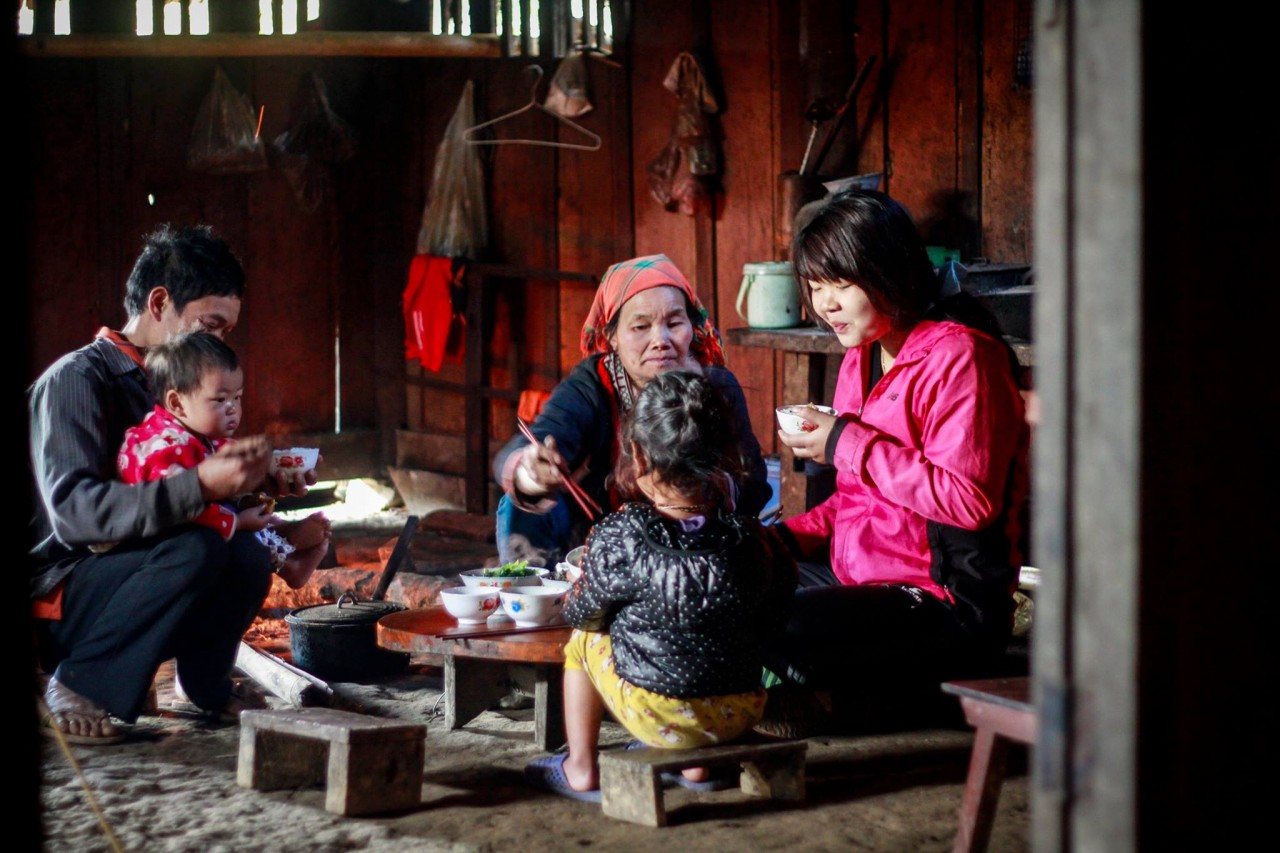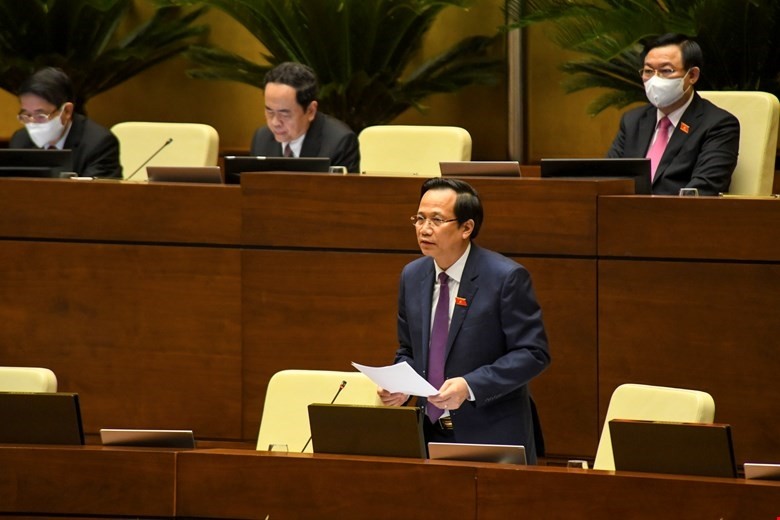
Sustainable poverty reduction: An important, humane achievement of Viet Nam
Latest
Since its establishment in 1945, the Party and the State have always prioritized maintaining the well-being of the people. President Ho Chi Minh once said: “If the country is independent but people are not happy or free, then independence is meaningless”. Therefore, “the policies of the Party and the Government must deeply care for the lives of the people”.
 |
| Sustainable poverty reduction and ensuring social welfare is a consistent, major direction of the Party and the State, thoroughly implemented on the Doi Moi, national construction and development. (Ảnh: Nguyễn Hồng) |
Consistent policies, simultaneous and organized implementation
According to the 13th National Party Congress Resolution, one major direction on national construction and development period 2021-2030 is “caring for the people, maintaining labor policies, jobs, salaries, ensuring social welfare and social security. Ceaselessly and comprehensively improving the material and spiritual lives of the people".
Since the 9th National Party Congress, the Party has always addressed the issue of “social welfare” in the Congresses’ Resolution.
It is evident that sustainable poverty reduction and ensuring social welfare is a consistent, major direction of the Party and the State, thoroughly implemented on the Doi Moi, national construction and development.
The 2013 Constitution of the Socialist Republic of Viet Nam claims that “Citizens have the right to social insurance” (Article 34) and “the State shall create equal opportunities for citizens to enjoy social welfare, develop the social security system, and adopt policies to support elderly people, people with disabilities, poor people, and other disadvantaged people”. (Article 59)
This is an important, socialist direction of the Vietnamese community under the leadership of the Party to ensure human rights, specifically the right to social insurance, written under Article 34, the 2013 Constitution of the Socialist Republic of Viet Nam.
Overcoming many difficulties, sustainable poverty reduction in Viet Nam has achieved impressive results. Viet Nam has become a model in its fight against poverty and has inspired other developing countries.
In the period of 2016 – 2020, Viet Nam’s poverty reduction has achieved significant results, demonstrated in numerous factors.
Poverty reduction results met and even exceeded the targeted goals set by the National Assembly, given by the Government. Specifically, the percentage of poor families decreased from 9.88% (2015) to 2.75% (2020) at an annual rate of 1.43% (initially set at 1 – 1.5%); the percentage of poor families among ethical minorities decreased by 4% (initially set at 3-4%) annually; the percentage of poor family in poor districts decreased by 5.4% annually (from initial goal of 4%).
Those achievements resulted from increasing awareness and utilizing the collective resources of the entire political system. Political systems, be it central government or local governments, have decisively acted, closely and simultaneously collaborated in directing, implementing policies, calling for the positive support of the entire society. People in poverty’ consciousness changed as they were no longer overdependent on support, with examples of many households escaping poverty and voluntarily requesting to be removed from the list of poor families.
In addition, programs, mechanisms, policies and laws regarding poverty reduction have been simultaneously issued to comprehensively support the poor people. The government also issued specialized poverty reduction policies, prioritized support for vulnerable people, people in minority and difficult areas, as well as gradually reduced and removed unconditional assistance policies while increasing conditional assistance policies.
The Government and Congress have paid close attention and mobilized the government budget, along with social resources for Poverty reduction programs. Total mobilized resources for the program were estimated to be 120,000 billion VND, with central budgets taken up to 35%, local social capital 41%, donations to “Fund for the Poor” and social security activities of the Central Committee of the Viet Nam Fatherland Front 24%.
Notably, Viet Nam has implemented poverty standards in a multi-dimensional, organized approach. Viet Nam has published its poverty standards 8 times, in consideration of its socio-economic developments. As a result, Viet Nam was among the first 30 countries in the world as well as in Asia to apply the multi-dimensional poverty standards, closely associated its minimum living standards to UN’s Sustainable Development Goals.
 |
| A well-constructed road in the middle of Phong Tho district, Lai Chau province. (Photo: VNA) |
No one left behind
As a result, people’s incomes have greatly increased, as their material and spiritual lives have significantly improved, specifically those in poor, difficult areas.
For example, poor people’s incomes have doubled in the last 5 years. More than 13.000 projects supporting manufacturing products, diversifying the livelihood and multiplying the poverty reduction model have positively affected 2.2 million households; 5,500 workers from poor, near-poor or ethnic minority households have received support to work abroad.
Due to the much-needed programs, mechanisms, policies, socio-economic infrastructures and regional connections have been prioritized. It has brought significant changes to poor, difficult areas. Along with the national transformation, a lot of provinces have made efforts to escape poverty.
32 districts and 125 villages from stricken, coastal areas and islands were removed from the list of difficult areas; 125 villages and 1.298 communes had Program 135 completed. More than 24,000 infrastructures have been invested.
Notable, the campaign “The whole nation joins hand for the poor – No one left behind”, rallied by the Prime Minister, has been widely and substantially implemented, created a competitive, exciting atmosphere in completing sustainable poverty reduction goals.
The Government have closely worked with the Central Committee of Viet Nam Fatherland Front to organize events, kindle the spirit of self-reliance, self-dependent in overcoming poverty and mobilize resources to accomplish sustainable poverty reduction goals. Through these campaigns, exemplary, effective poverty reduction models and innovations have been discovered and multiplied for further effects.
The campaigns have also created a unity between ideologies and actions, as well as prompted a general consensus in society, promoting the central role of the people in completing sustainable poverty reduction goals and objectives.
Finally, the Government and local provinces have always emphasized on evaluation, comprehensive review of poverty reduction work, focused on innovating mindsets, poverty reduction methods in consideration of the national socio-economic developments across periods as well as specific situations of region and areas.
Given an overall review of Viet Nam’s poverty reduction work over the past few years, Minister of Labour, War Invalids and Social Affairs Dao Ngoc Dung stressed: “We have come from reducing poverty by relying entirely on the national budget to making the people, poor households play central roles with the government’s leadership. These were significant steps in our mindsets and actions in our fight against poverty. We have met the UN’s millennial development goals earlier than expected. Our achievement has been well regarded by the international community as a spotlight on global poverty reduction.”
 |
| Minister of Labour, War Invalids and Social Affairs Dao Ngoc Dung spoke at the first plenary session of the 15th National Congress on July 27th. (Photo: National Congress) |
Meanwhile, United Nations Development Programme (UNDP)’s Permanent Representative in Viet Nam Caitlin Wiesen has remarked that Viet Nam’s poverty reduction achievement was nothing short of impressive and highly regarded by the international community.
With such outstanding, substantial results, well-received by the people and international community, Viet Nam has the foundations and motivations to continue implementing sustainable poverty reductions to successfully reduce multi-dimensional poverty by 1 – 1.5% per year in accordance to the Resolution of the 13th National Party Congress so that in 2030, there would virtually no poor district or difficult villages, contributing to the goal of a Viet Nam without poverty and with no one left behind.





















